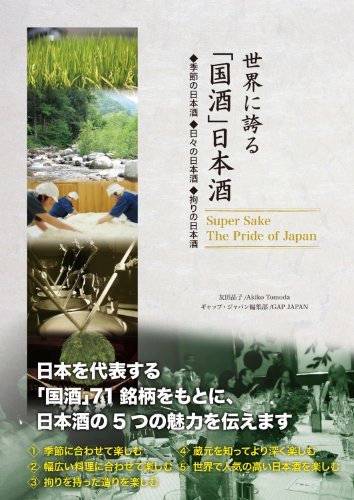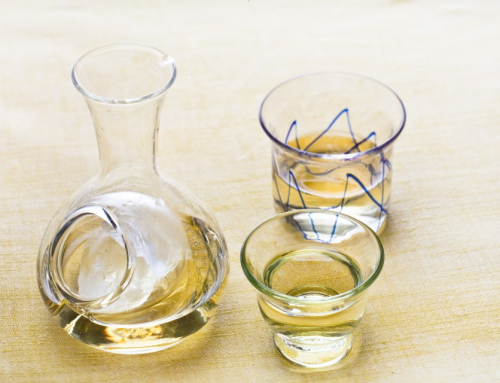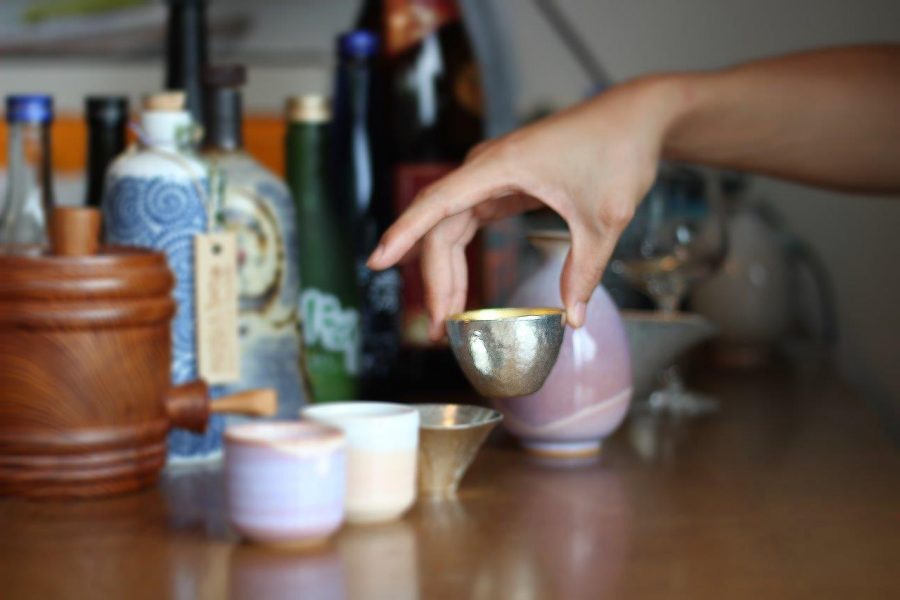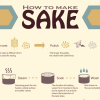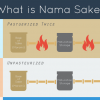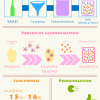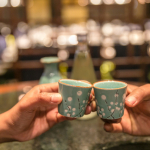Contents
- 1 Why Weren’t Women Allowed to Work at Sake Breweries?
- 2 How Has the Trend Changed Recently?
- 3 Sake Making Was a Female Job in Ancient Times?
- 4 Female Toji / Female Sake Production Managers
- 5 Tukino-wa / 月の輪 – from Iwate Prefecture (岩手県)
- 6 Machida Brewery / 町田酒造 – from Gunma Prefecture (群馬県)
- 7 Japanese – English Bilingual Sake Book by a renowned Female Sake Sommelier
It has been almost a conventional wisdom (in Japan) that Sake making is a male job. This is often depicted in various novels, mangas and TV drama series such as ‘Kura’ by Tomiko Miyao, ‘Natsuko no Sake’ by Akira Ose, and ‘Ama-Kara Shan’ broadcast by NHK.
 Ref: https://allabout.co.jp/gm/gc/225356/[/caption]
Ref: https://allabout.co.jp/gm/gc/225356/[/caption]
Why Weren’t Women Allowed to Work at Sake Breweries?
The main reason why Sake breweries were closed to female workers is the fact that Sake making involves a lot of hard labor. Rough works at Sake breweries which require physical strength is more suitable for male workers, and there was a concern that having a female worker among all male workers would be detrimental to teamwork. This was why there weren’t many female workers at Sake breweries.
How Has the Trend Changed Recently?
This trend has reversed in recent decades; today there are many female workers at Sake breweries. This is partly because there is a lack of labor supply for Toji, the production managers of Sake brewery, whose number has been decreasing while their average age has been increasing. However, another big reason is that an increasing number of Sake breweries try to apply female’s more sensitive ideas and thoughts to their Sake making. It can be said that there is no longer a gender inequality in terms of employment at Sake breweries.
Sake Making Was a Female Job in Ancient Times?
 今宮 えべっさん 福娘 2012 20 / Mixtribe Photo
今宮 えべっさん 福娘 2012 20 / Mixtribe Photo
One theory holds that the word ‘Toji / 杜氏’ – meaning the production manager of Sake brewery- was derived from the old word ‘Toji / 刀自’ which means a housewife. Ancient Sake was made by chewing uncooked rice and spitting it to a container, to let it be fermented by the enzyme in sativa. Some argue that this job was done by women, thus the word ‘Toji / 杜氏’ was derived from housewives.
In addition, there has been a deep, close relationship between Sake and religion since ancient times. It is argued that shrine maidens (Miko / 巫女) were the first to make Sake served for gods.
In any case, females have had essential roles in Sake making!
Female Toji / Female Sake Production Managers
Tukino-wa / 月の輪 – from Iwate Prefecture (岩手県)
Hiroko Yokozawa
Having worked in the fashion industry in a city, she returned to his father’s Sake brewery to start a new career in Sake making. She is now a regular gold prize winner in Annual Japan Sake Awards.
Feature Sake: Tokubetsu Junmai (特別純米)
-Clean, light-bodied Sake with pleasant finish, gone through low temperature fermentation.
Machida Brewery / 町田酒造 – from Gunma Prefecture (群馬県)
Emi Machida
Returning from Tokyo’s office work to her parent’s business at age of 25, She has become the first female Toji in Gunma Prefecture. Her Dai-ginjo Sake first won the gold prize in Annual Japan Sake Awards in 2006.
Feature Sake: Junmai 60 Wakamizu (純米60 若水)
Rich body and slightly high acidity, showing the savoriness of rice and the distinct characteristics of the water they use, called Wakamizu (若水)
Japanese – English Bilingual Sake Book by a renowned Female Sake Sommelier
Looking for Sake guide books? Here is one from Akiko Tomoda, who is a “Total Alcoholic Beverage Coordinator” and qualified Sommelier, Sake Sommelier, Shochu Advisor, Wine Advisor, Bergen Beer Technical Advisor and Cheese Professional.
This book introduces a bilingual deep insight of Sake, ranging from seasonal Sakes to those drunk in everyday life. This book has been awarded Gourman International Award 2014 for Japan’s best spirits book.
Click HERE to see her webpage on the book.
Here are some sample pages of the book.
Super Sake – The Pride of Japan is available at bookstores in Japan or at Amazon.com





